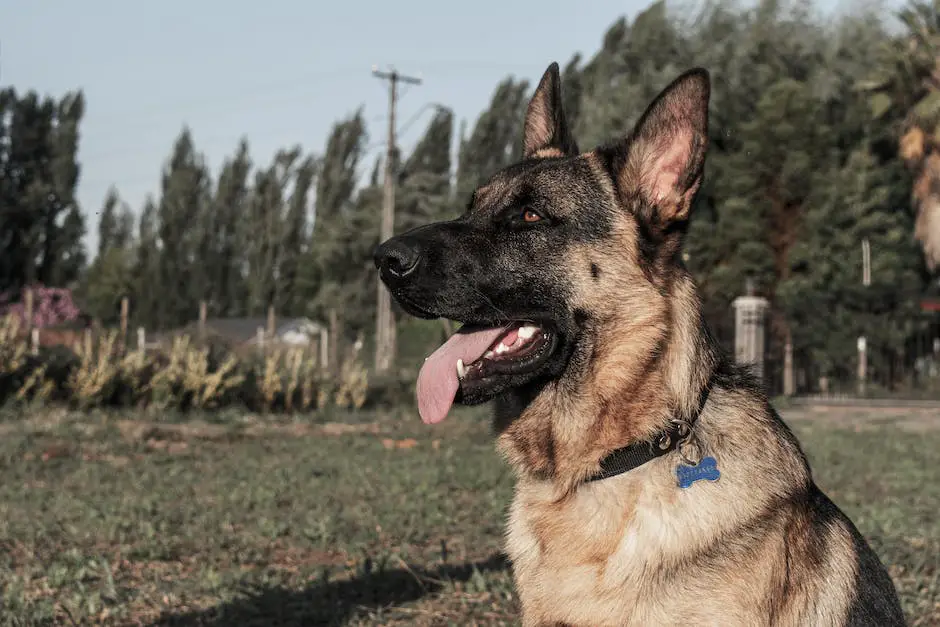Pancreatitis is a serious condition that can be very painful for dogs. If your dog has pancreatitis, there are some things you can do to help make them more comfortable. First, try to feed your dog smaller meals more often throughout the day instead of one large meal. You can also give your dog probiotics and enzymes to help with their digestion. Lastly, make sure they have a comfortable place to rest and try to keep them calm.
If your dog has been diagnosed with pancreatitis, the first step is to talk to your vet about the best course of treatment. Even with treatment, your dog may experience some discomfort. Here are a few ways you can help comfort your dog:
-Make sure your dog is getting enough rest. This means providing a quiet, comfortable place for your dog to recover.
-Limit your dog’s activity. Too much activity can increase your dog’s pain and make symptoms worse.
-Keep your dog’s meals small and frequent. Large meals can aggravate pancreatitis.
-Encourage your dog to drink water. Dehydration can worsen pancreatitis.
-Give your dog any prescription medication your vet has prescribed. This will help relieve your dog’s pain and inflammation.
-Talk to your vet about alternative pain relief options, such as acupuncture or massage.
How can I ease my dogs pancreatitis pain?
Pancreatitis is a condition in which the pancreas becomes inflamed. The most common symptoms are abdominal pain and nausea. Treatment typically involves rest, IV fluids, and pain relief medication. In severe cases, hospitalization may be necessary.
If your dog has pancreatitis, the recovery time will depend on the severity of the condition. For milder cases, your dog will need to be in the hospital for 2-4 days. After your dog leaves the hospital, you can expect them to have fully recovered within 1-2 weeks.
How do dogs act when they have pancreatitis
Pancreatitis can be quite variable in severity with some dogs not even requiring hospitalization. Any combination of abdominal pain, severe vomiting and diarrhea, and complete loss of interest in eating for days to a week or more can be seen. If your dog is showing any of these signs, it’s important to bring them to the vet for evaluation and treatment.
If your dog is experiencing any form of pancreatitis, it is important to seek veterinary care immediately. Pancreatitis can be very painful and can be life-threatening if not treated properly. If your dog has a history of pancreatitis, be sure to keep an eye on them for any signs of the condition and seek veterinary care as soon as possible if they begin to show any signs.
Can you treat dog pancreatitis at home?
If your dog has a serious case of acute pancreatitis, he needs veterinary care early on. It’s a very serious condition, so please don’t try to manage severe acute pancreatitis yourself at home. Don’t feel bad if your dog gets some emergency medications in the clinic.
Herbs can play an important role in supporting liver function and may be particularly useful for animals with pancreatitis. Alternative therapies such as acupuncture and homeopathy may also be helpful in managing the pain and nausea associated with the disease.
What triggers pancreatitis attacks in dogs?
There are a few different possible causes of dog pancreatitis, including excess weight, dietary indiscretion, and hormonal imbalance. Additionally, a toxic reaction to certain medications (like chemotherapy or anti-seizure drugs) can also cause pancreatitis in dogs. If your dog is exhibiting any symptoms of pancreatitis, it’s important to contact your veterinarian right away for proper diagnosis and treatment.
Pancreatitis is a serious and potentially life-threatening condition that occurs when the pancreas becomes inflamed. The exact cause of pancreatitis is unknown, but there are several potential risk factors, including diet, certain medications, and certain hereditary disorders.
Diet is thought to be a major contributing factor in the development of pancreatitis in dogs. Dogs who consume a diet that is high in fat are more likely to develop pancreatitis than those who consume a more balanced diet. In addition, certain medications, such as corticosteroids and certain antibiotics, have been linked to the development of pancreatitis.
Certain hereditary disorders, such as those that affect the way the body handles fat, are also thought to be a risk factor for pancreatitis. If your dog is believed to be at risk for pancreatitis, it is important to discuss this with your veterinarian and take steps to prevent the condition from developing. Pancreatitis can be a very serious and potentially life-threatening condition, so it is important to be aware of the potential risk factors and take steps to protect your dog’s health.
How likely is a dog to survive pancreatitis
Pancreatitis is a serious condition that can be life-threatening if not treated properly. The prognosis for dogs with pancreatitis is difficult to predict, but most dogs with mild, uncomplicated cases can make a full recovery with proper medical care and diet.
Many dogs will fully recover from pancreatitis and go on to live normal, happy lives. However, the risk of another bout of pancreatitis at some point in the dog’s life remains high.
Is chicken OK for dogs with pancreatitis?
Pancreatitis is a potentially very serious condition that can cause serious complications. It is important that patients are very careful about what they eat to avoid exacerbating the condition. Boiled chicken, low fat beef, egg whites, yogurt, barley and cooked vegetables are all considered to be safe foods for pancreatitis patients.
A dog with severe pancreatitis generally has a poor prognosis and a higher risk of death. This is because the condition can lead to a severe whole-body inflammatory condition, which can result in multiple organ failure.
Do dogs usually survive pancreatitis
Pancreatitis is a serious condition that can lead to long-term consequences for dogs. Most dogs recover without any long-term issues, but some may develop problems with digestion if a significant number of cells that produce digestive enzymes are destroyed. Repeated episodes of pancreatitis can also cause other problems, such as diabetes, so it is important to seek veterinary care if your dog shows any signs of pancreatitis.
Most mild cases of pancreatitis recover with conservative management. Admission to the hospital is usually not required. Oral analgesics and supportive measures are usually sufficient. More severe cases may require hospitalization and parenteral analgesics. Pancreatitis can recur, so it is important to follow up with your healthcare provider.
What foods to avoid if your dog has pancreatitis?
When your dog is diagnosed with pancreatitis, it is important to avoid high-fat diets. This includes red meat, organ meat, potato and starchy foods, sugary goods, table scraps, and dairy fats. Instead, focus on feeding your dog a low-fat, easily digested diet. This will help to relieve symptoms and prevent flares.
There are several digestive enzymes that can cause pancreatitis in dogs. These enzymes may eventually start leaking into the blood stream where they can be carried to other organs and cause damage. Most cases of pancreatitis in dogs are sudden and acute in nature.
Can pancreatitis come and go in dogs
Chronic pancreatitis is a condition characterized by inflammation of the pancreas. This condition can cause a variety of symptoms, including diarrhea, weight loss, and abdominal pain. Chronic pancreatitis can be difficult to manage, and even when the symptoms seem to improve, the pancreas can still be inflamed. Over time, chronic pancreatitis can lead to loss of exocrine pancreas tissue, which can worsen the diarrhea and other symptoms.
If you are suffering from a mild case of pancreatitis, you can be treated on an outpatient basis. All you need to do is withhold food and water for 36 to 48 hours, and then reintroduce food with a bland diet. “One of the key things is to make sure to feed a diet that’s low fat,” says Dr Ross. This will help to ease the symptoms and help you to recover quickly.
What can mimic pancreatitis in dogs
To ensure an accurate diagnosis, your veterinarian will also test for diseases that mimic pancreatitis, such as kidney or liver disease. Steiner recommends giving pets with pancreatitis a low-fat diet, which includes restricting animals from treats.
The following foods are acceptable for use in home-cooked diets:
Boiled, skinless chicken breast
Whitefish
Cooked potatoes or sweet potatoes (with skins removed to reduce fiber)
Low fat cottage cheese
Boiled, skinless turkey or low-fat ground beef
Cooked broccoli and cauliflower
Cooked winter squash
Egg whites
What is the best dog food for a dog with pancreatitis
Pupper Fuel’s Chicken Dog Food is one of the best dog foods for pancreatitis. It is a grain-free, all-natural nutritional diet that promotes overall health and performance. The chicken used in this food is raised in a natural environment and the vegetables are high in taste and nutrient content.
A common guideline for feeding puppies is to start with one-quarter of the dog’s resting energy requirement divided into four meals throughout the day. So, if a puppy needs 30 calories per pound of body weight per day, they would receive four meals consisting of about 7.5 calories per pound spread over 24 hours.
Are bananas good for dogs with pancreatitis
If your dog has pancreatitis, it’s important to feed them a diet that will reduce pancreas inflammation. Bananas are a great source of potassium and easy to digest, making them a possible treat for your dog.
Panreatitis is an inflammation of the pancreas that can be challenging to diagnose due to the influence of other factors on clinical signs. However, with therapy, a low fat diet and careful monitoring, many dogs can recover and have a normal quality of life.
At what age do dogs get pancreatitis
Pancreatitis is a condition that can affect dogs of any age, but is most commonly seen in middle-aged or older dogs. Acute pancreatitis is the most common type of pancreatitis seen in dogs, and can cause serious health problems if not treated promptly. If you think your dog may be showing signs of pancreatitis, it is important to contact your veterinarian right away.
Dehydration is a common complication during pancreatitis, so it is important to make sure your dog is getting enough fluids. Simply giving water at home or using a syringe to get fluids into a dog orally may not be enough. In extreme cases, a food tube may be inserted to provide proper nutrition.
What does pancreatitis poop look like in dogs
If your dog has a greasy-looking gray stool, it may be a sign that they are consuming too much fat in their diet. This can lead to pancreatitis, which is an inflammation of the pancreas. Pancreatitis can range from very mild to life threatening, so it’s important to keep an eye on your dog’s stool and consult with your veterinarian if you notice any changes.
The best food choices for those suffering from chronic pancreatitis are fruits, vegetables, whole grains, legumes, and nonfat/low fat dairy, and lean cuts of meat. Healthy fats such as avocado, olive oil, fatty fish, nuts, and seeds, may be consumed with careful portion control.
Warp Up
If your dog has pancreatitis, it is important to seek veterinary attention immediately. Dogs with pancreatitis often experience belly pain and may appear lethargic. To comfort your dog, try offering small, frequent meals of bland food. You may also need to give your dog pain medication prescribed by your veterinarian.
There are a few things you can do to comfort a dog with pancreatitis. You can start by hand feeding them small meals throughout the day. You can also try giving them a warm bath or putting a heating pad on their bed. Finally, make sure to give them plenty of love and attention.






